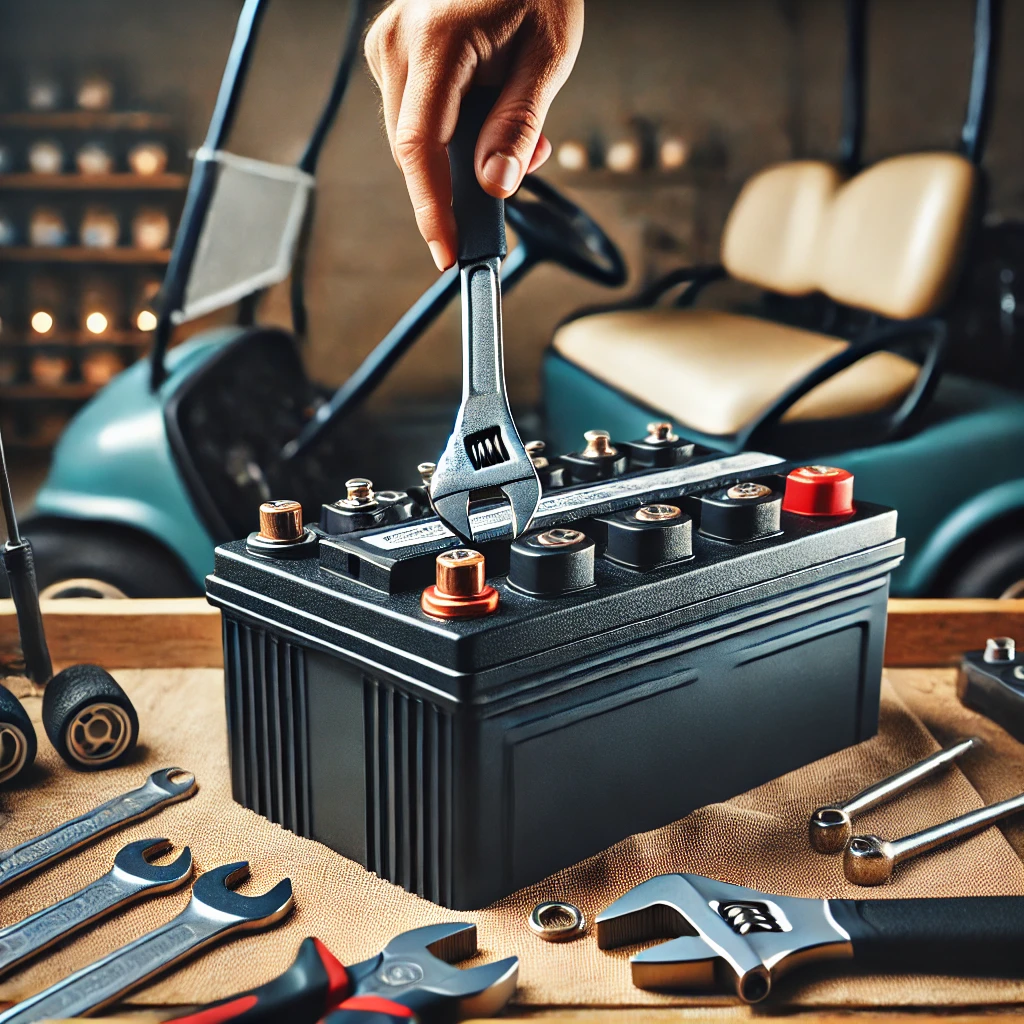Golf carts have become more than just a way to get around the golf course; they’re essential vehicles for many communities, large properties, and even personal transportation. At the heart of every electric golf cart is its battery, which plays a crucial role in its performance and longevity. Whether you’re a seasoned golf cart owner or a newcomer, understanding how to maintain, replace, and upgrade your golf cart battery is essential. This guide will cover everything you need to know to keep your cart running smoothly.
1. Understanding Golf Cart Batteries
Golf cart batteries are typically deep-cycle batteries, designed to provide a steady amount of power over a long period, unlike car batteries that are designed for short bursts of high energy. Most golf carts use 6-volt, 8-volt, or 12-volt batteries, connected in a series to produce the required 36V or 48V needed to power the cart.
2. Maintenance Tips for Prolonging Battery Life
Proper maintenance is key to prolonging the life of your golf cart batteries. Here are some essential tips:
- Regularly Check Water Levels: Golf cart batteries are typically flooded lead-acid batteries, which means they need to be filled with distilled water. Check the water levels every month and top up as needed.
- Keep Batteries Clean: Dirt and corrosion can damage the battery terminals. Clean the terminals regularly with a solution of baking soda and water, and use a terminal protector to prevent corrosion.
- Charge After Every Use: Don’t wait until your battery is completely drained to charge it. Regular charging after every use can prevent deep discharges, which can shorten the battery’s lifespan.
- Avoid Overcharging: Overcharging can cause overheating and reduce the battery’s capacity. Use an automatic charger that shuts off when the battery is fully charged.
3. When and How to Replace Your Golf Cart Battery
Even with the best care, golf cart batteries will eventually need to be replaced. Here’s how to know when it’s time:
- Reduced Run Time: If your golf cart doesn’t run as long as it used to on a full charge, it might be time for a new battery.
- Slow Acceleration: A noticeable decrease in power and acceleration is a sign that the battery is nearing the end of its life.
- Physical Damage: Cracks, bulges, or leaking acid are clear indicators that the battery needs to be replaced immediately.
Replacing Your Battery:
- Choose the Right Battery: Ensure that you choose a battery with the same voltage and dimensions as the original. Consider upgrading to a higher capacity battery for improved performance.
- Proper Installation: Follow the manufacturer’s instructions for installing the new battery. Ensure all connections are tight and secure to avoid issues.
4. Upgrading Your Golf Cart Battery
If you’re looking to get more performance out of your golf cart, upgrading the battery is a great place to start. Here are some options:
- Higher Voltage Battery Pack: Upgrading from a 36V to a 48V battery pack can significantly increase the speed and torque of your golf cart.
- Lithium-Ion Batteries: Lithium-ion batteries are lighter, more efficient, and have a longer lifespan than traditional lead-acid batteries. While more expensive, they offer superior performance and lower long-term maintenance costs.
- Battery Monitoring System: Installing a battery monitoring system can help you keep track of your battery’s health and performance, ensuring you get the most out of your investment.
Conclusion
Taking care of your golf cart’s battery is essential for ensuring it performs well and lasts as long as possible. Regular maintenance, timely replacement, and smart upgrades can keep your cart running smoothly for years. Whether you’re sticking with your current battery setup or looking to upgrade, understanding the ins and outs of golf cart batteries will help you make the best decisions for your needs.



